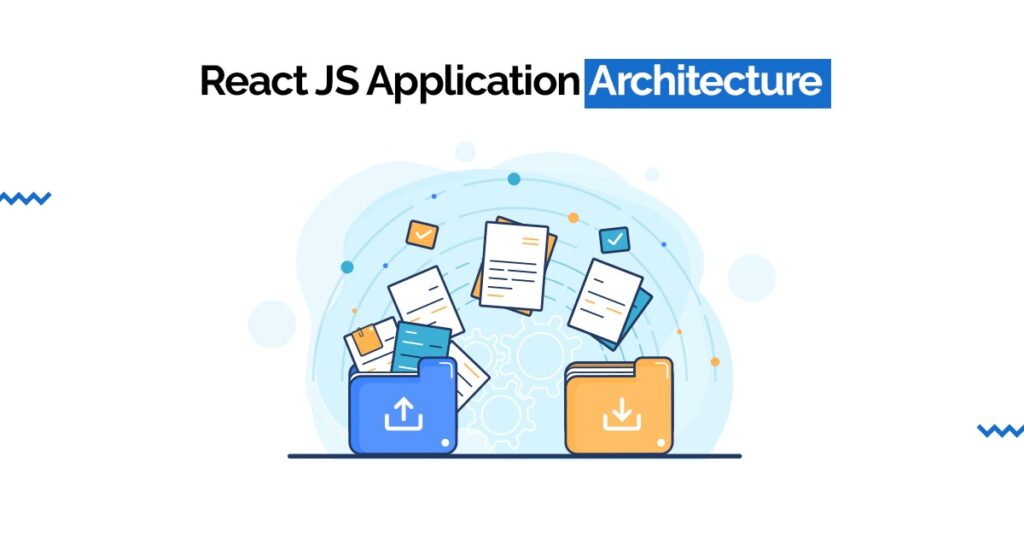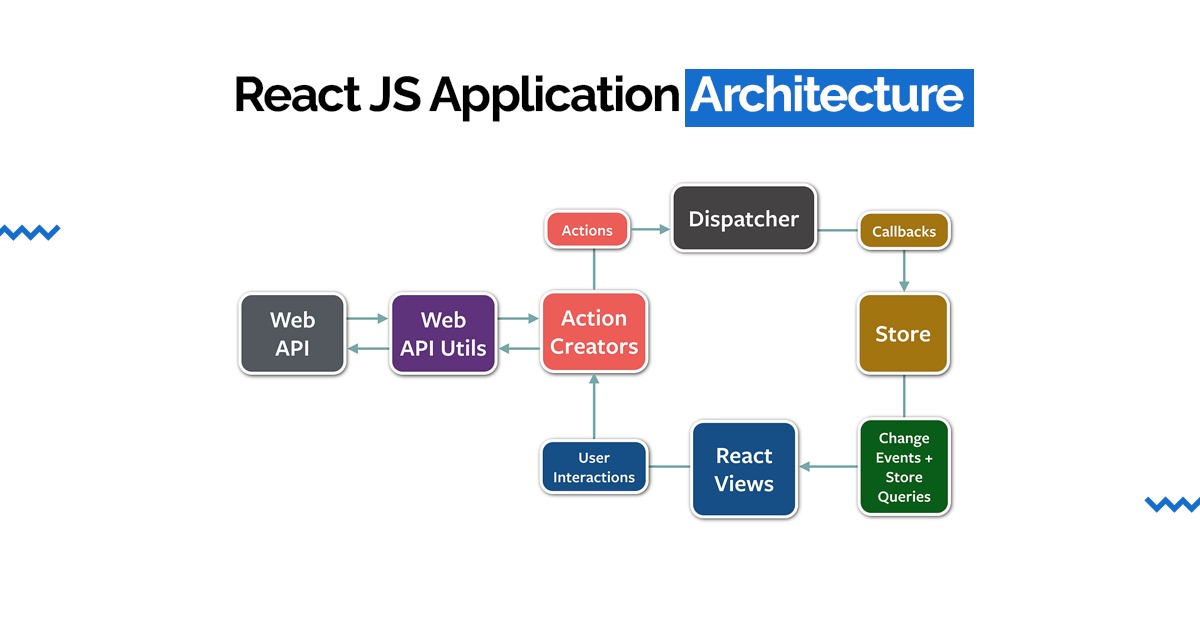React JS application architecture is essential for building scalable and efficient web applications. It involves organizing and structuring your app in a way that makes it easy to manage and grow over time. The core of React’s architecture lies in its modular components, allowing developers to create reusable UI elements that can be independently managed and updated. This is especially crucial when working on complex systems like react enterprise application architecture or react architecture for large application. By following react architecture best practices, teams can ensure that their projects stay organized and maintainable.
When designing React apps, understanding react architecture patterns—such as MVC—can help developers define clear roles for different components and ensure smooth data flow. Additionally, tools like react js application architecture diagram and react js application architecture github provide resources and examples that can guide you through building efficient and scalable systems. Whether you’re looking for a react js application architecture tutorial or react js application architecture example, these tools are invaluable for mastering React’s architecture.
What is React JS?
React JS is a popular JavaScript library for building user interfaces, especially single-page applications. It enables developers to create interactive and dynamic web pages by breaking them into small, reusable react modular components. React is known for its virtual DOM, which boosts performance and enhances the overall user experience.
How to Create a React JS Application Architecture for Large-Scale Applications?
Creating a solid React JS application architecture is essential when building large-scale applications. Proper architecture ensures that the app is scalable, maintainable, and easy to work on as the project grows. For react architecture for large application, focusing on react modular architecture and using react modular components can help break down complex systems into smaller, manageable parts. By understanding react architecture patterns and following best practices, you can create a structure that supports long-term development. In this guide, we will explore key points to consider when developing architecture for enterprise-level React applications.
Key Points to Consider When Creating React JS Application Architecture for Large-Scale Apps
Modular Architecture Design: React modular architecture allows you to break down the app into smaller, reusable components. Each component has its specific responsibility, making it easier to maintain and scale as the application grows. Using react modular components helps in reducing redundancy and improving code organization.
Choose the Right Architecture Pattern: When building large applications, using the right react architecture patterns is crucial. Patterns like MVC or Flux ensure that data flow and management are handled efficiently. These patterns help structure the app into distinct layers, making it easier to manage complex interactions between different components.
Component-Driven Development: In react enterprise application architecture, components should be the building blocks of your application. This approach simplifies debugging, enables reusability, and helps developers focus on specific features without affecting other parts of the application.
State Management: Large applications often involve complex state management. Implementing tools like React’s Context API or third-party libraries such as Redux helps in managing state across various components, preventing the app from becoming disorganized as it scales.
Code Splitting and Lazy Loading: To enhance performance, consider using code splitting and lazy loading in your react js application architecture. This ensures that only the necessary code is loaded when needed, reducing initial load time and improving user experience, especially for large applications.
Create a Scalable Folder Structure: A scalable folder structure is key to maintaining order in large projects. Organize your files based on functionality rather than type, which allows for easier navigation as the app grows. Group components, hooks, and services in logical folders to keep your codebase clean.
Utilize TypeScript: Using TypeScript in react js application architecture can help in large-scale apps by providing static typing. This reduces errors and improves collaboration by ensuring that team members follow a common set of data structures and types.
API Integration and Management: For enterprise applications, managing API integrations properly is essential. Structuring your API calls in a consistent way helps in maintaining a clean architecture. Use libraries like Axios to manage these calls and keep them modular.
Performance Optimization: Performance should always be a priority in large applications. Implement techniques such as memoization and PureComponent to reduce unnecessary re-renders. Monitor app performance using tools like the React Developer Tools and optimize the components for speed.
Version Control and GitHub Usage: For large teams, maintaining version control through React architecture GitHub repositories is crucial. Using a centralized system for collaboration and ensuring that the react js application architecture github repository is properly organized helps teams work together without running into conflicts.

7 Best Practices for React Architecture in Large Applications
When building large applications with React JS application architecture, it’s crucial to follow react architecture best practices. Adopting solid strategies ensures that your app remains scalable, maintainable, and easy to navigate. Below are some essential tips to guide you in structuring your react enterprise application architecture.
Best Practices for React Architecture in Large Applications
Leverage React Modular Architecture: Break down your application into smaller, reusable pieces using react modular components. This reduces redundancy and helps in maintaining the application over time.
Follow React Architecture Patterns: Whether using MVC or Flux, adopting the right react architecture patterns helps structure your app for scalability and better data management.
Separate Concerns: Keep business logic, UI components, and state management separate. This makes the codebase more maintainable and reduces complexity in large-scale projects.
Prioritize Reusability: Design components that can be reused across your application. This keeps the codebase clean and reduces duplication.
Use Code Splitting: Load only the necessary components when needed. Implement react js application architecture diagram tools to visualize how code splitting can enhance your app’s performance.
Modularize State Management: Use tools like Redux or Context API to manage state effectively across different modules of your application, making it scalable.
Plan for Asynchronous Handling: For large applications, ensure proper handling of asynchronous actions like API calls. Use react architecture github to find examples of handling complex async tasks.
Component Isolation: Avoid tightly coupled components. Isolate components so that they can be tested and debugged independently.
Use a Consistent Folder Structure: Organize components, hooks, and services in a logical folder structure. This will make navigating your app much easier, especially as it grows.
Version Control with GitHub: Keep your react js application architecture github organized with clear version control practices to manage contributions from different developers and teams.
7 Best Practices for React Architecture in Large Applications
When building large applications with React JS application architecture, it’s crucial to follow react architecture best practices. Adopting solid strategies ensures that your app remains scalable, maintainable, and easy to navigate. Below are some essential tips to guide you in structuring your react enterprise application architecture.
Best Practices for React Architecture in Large Applications
Leverage React Modular Architecture: Break down your application into smaller, reusable pieces using react modular components. This reduces redundancy and helps in maintaining the application over time.
Follow React Architecture Patterns: Whether using MVC or Flux, adopting the right react architecture patterns helps structure your app for scalability and better data management.
Separate Concerns: Keep business logic, UI components, and state management separate. This makes the codebase more maintainable and reduces complexity in large-scale projects.
Prioritize Reusability: Design components that can be reused across your application. This keeps the codebase clean and reduces duplication.
Use Code Splitting: Load only the necessary components when needed. Implement react js application architecture diagram tools to visualize how code splitting can enhance your app’s performance.
Modularize State Management: Use tools like Redux or Context API to manage state effectively across different modules of your application, making it scalable.
Plan for Asynchronous Handling: For large applications, ensure proper handling of asynchronous actions like API calls. Use react architecture github to find examples of handling complex async tasks.
Component Isolation: Avoid tightly coupled components. Isolate components so that they can be tested and debugged independently.
Use a Consistent Folder Structure: Organize components, hooks, and services in a logical folder structure. This will make navigating your app much easier, especially as it grows.
Version Control with GitHub: Keep your react js application architecture github organized with clear version control practices to manage contributions from different developers and teams.
Conclusion
Following the right React JS application architecture practices is crucial for building large-scale applications that are easy to maintain and scale. By using react architecture best practices and modular approaches, you can ensure your app stays organized, efficient, and flexible. These strategies will set you up for long-term success.
Key Takeaways
- React Modular Architecture helps reduce complexity by breaking down your app into smaller, reusable components.
- React architecture patterns, such as MVC, ensure clear data flow and separation of concerns.
- Reusability of components minimizes code duplication and makes future updates easier.
- Proper state management tools, like Redux, ensure consistent state handling.
- Code splitting and lazy loading reduce initial load time and improve performance.
- A clear folder structure keeps the codebase organized and easy to navigate.
- Asynchronous handling is essential for managing complex tasks in large applications.
- Isolating components allows for better testing and debugging, ensuring fewer errors.
- Keep your react js application architecture diagram updated to visualize the app’s structure.
- Version control using GitHub helps manage collaboration and track changes within your team.
Frequently Asked Questions (FAQs)
What is the architecture of ReactJS?
The architecture of ReactJS revolves around its component-based structure, where applications are broken down into smaller, reusable units called components. This approach aligns with react modular architecture, where each component is independent and responsible for rendering specific parts of the UI. React uses a virtual DOM to optimize performance by minimizing direct interactions with the real DOM. In large-scale applications, it’s important to follow react architecture best practices, such as utilizing react architecture patterns like MVC or Flux. Proper react js application architecture ensures scalability, maintainability, and easier debugging as your app grows in complexity.
Is React a MVC or MVVM?
React is typically considered more aligned with MVVM (Model-View-ViewModel) than MVC (Model-View-Controller). In React, the view represents the UI components, while the model refers to the data managed by the application. The viewModel is handled by React’s state and props system, which binds the data and UI. In this pattern, React acts as the view, with the react application architecture diagram often showing how components update and render based on state changes. Although React can be used within an MVC architecture, its declarative approach and component structure make it more naturally suited to MVVM for complex apps.
What is the best architecture for React?
The best architecture for React largely depends on the scale and complexity of the application. For small projects, simple react modular architecture with functional components and state management through React’s built-in state or Context API might be sufficient. For larger applications, incorporating react architecture patterns such as Flux or Redux offers more structure. Using react js application architecture diagram tools can help visualize your app’s flow and better manage data and UI updates. React enterprise application architecture often involves additional concerns, such as server-side rendering, routing, and better state management solutions, to ensure scalability and maintainability.
What is the structure of a React app?
The structure of a React app typically consists of three primary parts: components, assets, and state management. Components form the core structure of a React app, and they can be organized into functional or class-based components. The assets include images, stylesheets, and other media files. React modular architecture ensures that components are independent, reusable, and maintainable. Additionally, React apps often have folders for services, utility functions, and hooks. For larger applications, react js application architecture diagram tools can help structure your app’s folder system to maintain clear boundaries and reduce complexity as the app grows.
What is MVVM architecture in React?
MVVM (Model-View-ViewModel) is an architectural pattern where the model represents data, the view is the UI, and the viewModel binds the view to the model. In React, the view is managed through components, and the model is typically stored in the application’s state. The viewModel in React is represented by the logic that manages how the view updates when the model changes. The react architecture MVC or MVVM patterns focus on the separation of concerns, which makes it easier to scale and manage complex applications. React’s component-based system supports MVVM by allowing the viewModel to manage data and pass it to the view in a clean and structured manner.


